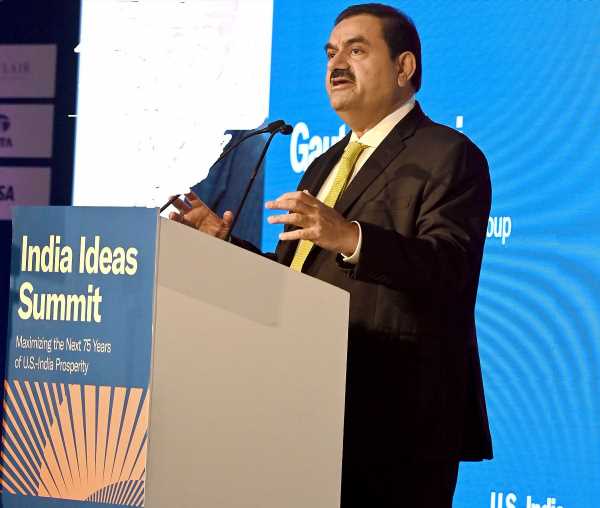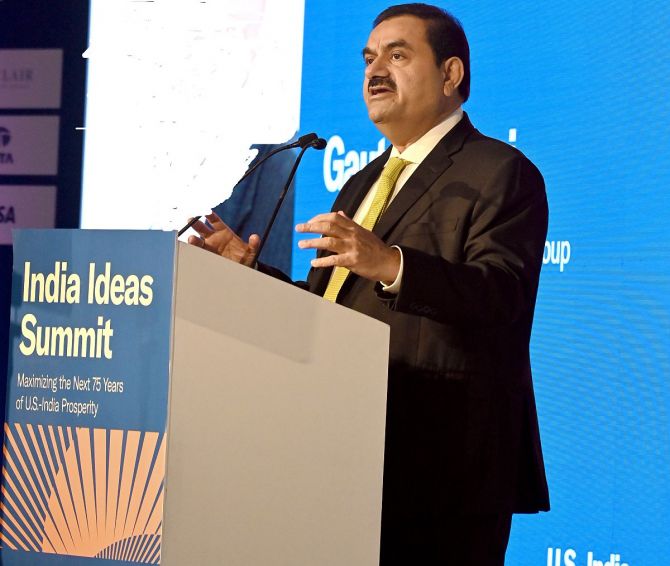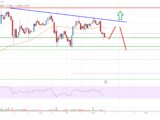
Can Adani Do A Dhirubhai?
February 6, 2023The last time a bear attack was launched on a controversial businessman was when a cabal of brokers launched an assault in the early 1980s on what they thought was an over-priced Reliance share, recalls T N Ninan.
Gautam Adani has a fight on his hands.
Whether or not you think his group’s rebuttal of the appropriately named Hindenburg report on the Adani companies is convincing (it covers only some of the points in the report), the share prices of group entities have seen a sharp dip.
The last time a bear attack was launched on a controversial businessman gaining rapidly in prominence was when a cabal of brokers launched an assault in the early 1980s on what they thought was an over-priced Reliance share.
The company’s promoter was the redoubtable Dhirubhai Ambani, no mean share market operator himself.
He responded quickly by rounding up ‘Friends of Reliance’, mostly from abroad, and launched a counter-attack — forcing heavy costs on the bears, who now had to cover their open positions even as the Reliance price soared.
No stock-market player took him on again.
The difference this time is that the Adani group’s stocks have already been on a slide for some months, after their extraordinary ride up the charts in the past few years.
Group company shares peaked at different points in 2022; the fall since then has ranged up to a substantial 35 per cent, even 45 per cent.
The current losses have come on top of that.
For companies with limited public holdings, there can be large price swings even with low trading turnover.
That is the risk, but it could also point to an Adani rescue effort, a la Dhirubhai.
One problem is that the performance of group companies has been nothing to crow about.
Adani Enterprises, for instance, saw its revenue grow 75 per cent in 2021-2022 after three relatively flat years; yet its net profits fell during the year, and were less than 1.5 per cent of sales.
For six of seven listed companies, taken together, pre-tax profits in the year to March 2022 showed a slight decline.
The exception was Adani Power, which saw a near-trebling of profits with little growth in revenue.
These are not the financials that one would expect from companies valued at 300 and even 600 times earnings — stratospheric multiples that one might understand for small start-ups with exponential growth potential, not for companies in capital-intensive infrastructure businesses.
The only real-world valuations are for Adani Power (a price to earnings, or P:E, ratio of 12) and Adani Ports (P:E of 27).
The last time an infrastructure company hit Adani-scale valuations involved Anil Ambani’s Reliance Power at the time of its similarly over-priced public issue in 2008, and we know where that story went.
News reports have suggested that the reason why such bloated valuations and indeed the group’s mediocre performance have escaped detailed scrutiny so far is that few broking houses do research on most Adani stocks, although some group companies are part of the main stock-market indices.
Possibly the series of rapid announcements of outsize new projects in areas ranging from green energy and defence equipment to semi-conductors, accompanied by an acquisition spree involving ports, airports, a cement company, and now a cricket franchise, has presented a difficult, moving target.
Or, equity researchers may have been wary of looking too deep into the finances of a politically connected group.
The pertinent question is what the stock market regulator and sundry investigative agencies have been doing.
There have been periodic news reports over the past couple of years, mentioning some of the issues in the Hindenburg report.
Sundry investigations were said to have been launched, but seem to have run aground.
Source: Read Full Article



